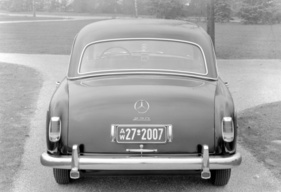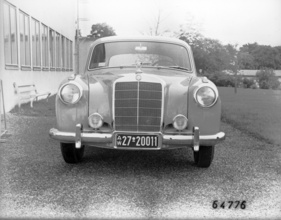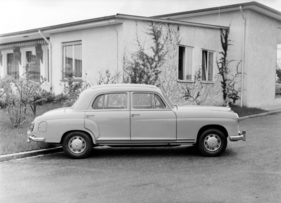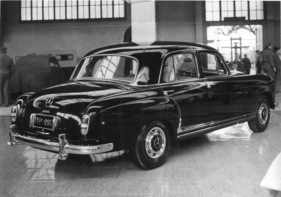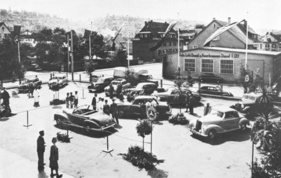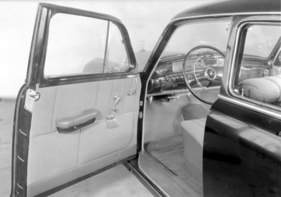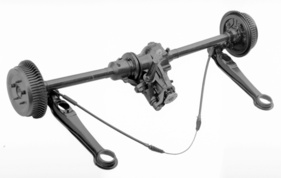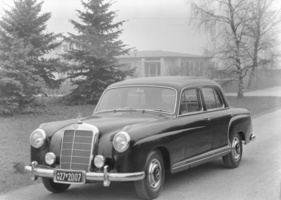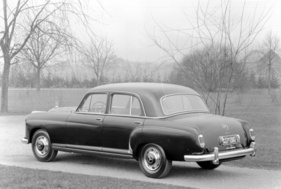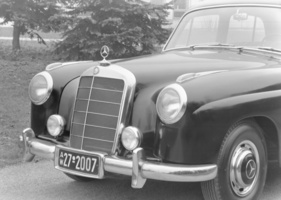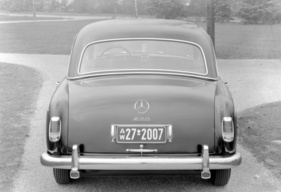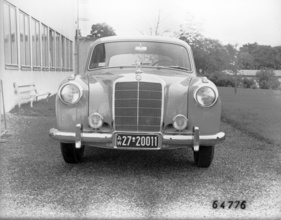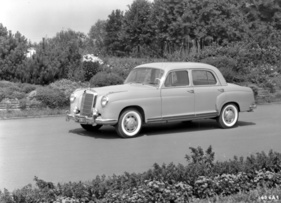A completely new radiance - Mercedes-Benz 220 in the (historic) test
Summary
Only the name remained from the previous 220 model: from 1954, the Mercedes-Benz 220 was presented with a modern pontoon body, revised engine and improved chassis. The new single-joint swing axle at the rear in particular increased driving safety to a previously unknown level. The six-cylinder engine was significantly more elastic than before. This historical test report provides a more detailed verdict.
This article contains the following chapters
- A fast engine
- Safety thanks to single-joint suspension
- Fully equipped
- Technical profile
Estimated reading time: 7min
Preview (beginning of the article)
The older the tradition that a car factory can look back on, the harsher the criticism of a new model will be. And not without good reason, because decades of experience in car manufacturing and uninterrupted tradition also carry obligations. Daimler-Benz, the oldest automobile factory in the world, is aware of this tradition and the consequences it entails. Perhaps this is why it has taken such a disproportionately long time for the new Type 220 car to replace its predecessor of the same name. We still remember that sunny day in March 1954 when the newly developed Type 220 was presented to the international press at the Sindelfingen plant. Even then, one had the feeling that there must be something special about this car, if one could draw a conclusion from its outward appearance alone. But the short test drive on that March 5 could not, of course, produce a final verdict. Only a thorough test - a test that no driver would normally demand of the car in everyday driving - could give the final verdict.
Continue reading this article for free?
Photos of this article









